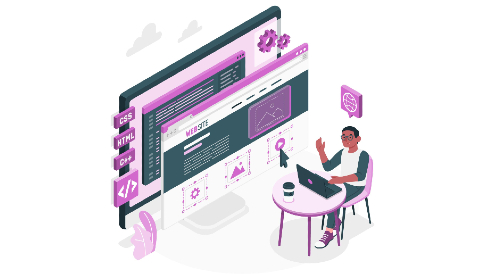How to Use Background Images on Your Website (Without Overwhelming the Visitor)
Website background images can fly under the radar, and yet these backdrops also have the potential to make or break your site’s vibe, which is why they need to be taken more seriously than you’d assume. The simple truth is that slapping any old pic in the background could send your visitors running for the hills or, at the very least, fail to convey what your brand is aiming for. So stick around for the inside scoop on mastering this visual wizardry.
Keeping It Real with Resolution and File Size
Let’s kick things off with the techy bit – resolution and file size hold the keys to the background image kingdom. First, you have to aim for that sweet spot if you’re slinging pixels like they’re going out of style. You know, crisp enough to dazzle but not heavy enough to drag your site speed down into the abyss.
Here’s the deal: nobody likes a slowpoke website. Oversized images can be data hogs that put your loading times on a serious snooze fest – bad news for user experience! So compress those files; keep ’em lean and mean. There are heaps of tools online that’ll squish down those megabytes without ghosting on quality.
Basically, balance is king. Go to low-res; it’ll look like Minecraft had a baby with your brand. Get it just right? Chef’s kiss—your site will fly faster than gossip in a small town while looking sharp as heck!
Seamless Scenes: The Art of Blending In
Alright, squad, let’s chat about how to make your background image gel like a well-oiled machine. Rule number one: don’t let it scream for attention like a toddler on a sugar rush. A background is just that—the backdrop, not the star of the show.
Think subtle patterns, soft colors, or maybe even a dreamy gradient – something that whispers elegance instead of yelling chaos. Imagine you’re at a chill lounge; you want that smooth jazz ambiance for your site where the background sets the mood without stealing the spotlight from your content.
Opacity? Yeah, we’ll tweak that slider until it’s just right – creating layers faster than an onion in therapy. And don’t forget the blending modes; these bad boys can help fade your image into oblivion or give it just enough oomph to support what’s up front without causing any drama.
So keep it classy and complementary – when done right, visitors will feel all Zen but won’t be able to put their finger on why. Now that’s what I call nailing the vibe!
Choosing Background Images In Keeping With Your Brand
Alrighty, pivot time! Let’s chat about selecting that perfect pic that gels with your brand like peanut butter does with jelly. Now, unless you’re in the business of selling hot sauce or hosting bonfire parties, fire background images might not be the vibe you’re shooting for.
What should you be hunting for, then? Compatibility is the name of the game here. Visuals are mega-mind influencers, and your background image has to reflect what your brand stands for. Slingin’ eco-friendly products? Think lush greenery and earthy tones that ooze Mother Nature vibes.
And please, let’s not get all mismatched like socks from a lost-and-found bin. Your visuals set expectations—show me glitz and glamor, but hand me dish soap will likely leave folks confused.
Consider the emotional response, too – does it give off those cozy feelings, or is it more about efficiency and innovation? Nail this step right and watch how seamlessly each visitor transitions from “just looking” to “must have”—that’s when you know you’ve locked down branding gold!
User-Friendly or Bust: Fine-Tuning for Functionality
Let’s not kid ourselves – your site needs to be as easy to use as your favorite streaming service. Picking a killer background is all well and good, but if it turns navigating into an escape room puzzle, we’ve got issues. You want to make sure that text readability doesn’t take a nosedive. That’s right – no eye-strain-inducing color battles between font and image here. Pro tip? Overlay that bad boy with a transparent shade so the words pop without playing hide-and-seek.
And don’t get me started on clickable areas. Your visitors should be able to spot links faster than finding Waldo in a striped sweater convention. Interactive elements need clear contrast so they’re not swallowed up by the artsy chaos in the back.
So tweak those hues, adjust contrasts like you’re tuning an old radio for crystal-clear reception, and always remind yourself: user-friendly design isn’t just jargon—it’s your website’s best bud!
How to Use Background Images on Your Website – Wrapping Up
So, armed with the deets on how to whip up a top-notch background without overwhelming your new arrivals, you’re ready to turn that digital canvas into a masterpiece. Keep things snappy, fresh, and seamless – may the bounce rates ever be in your favor.




Leave a Reply